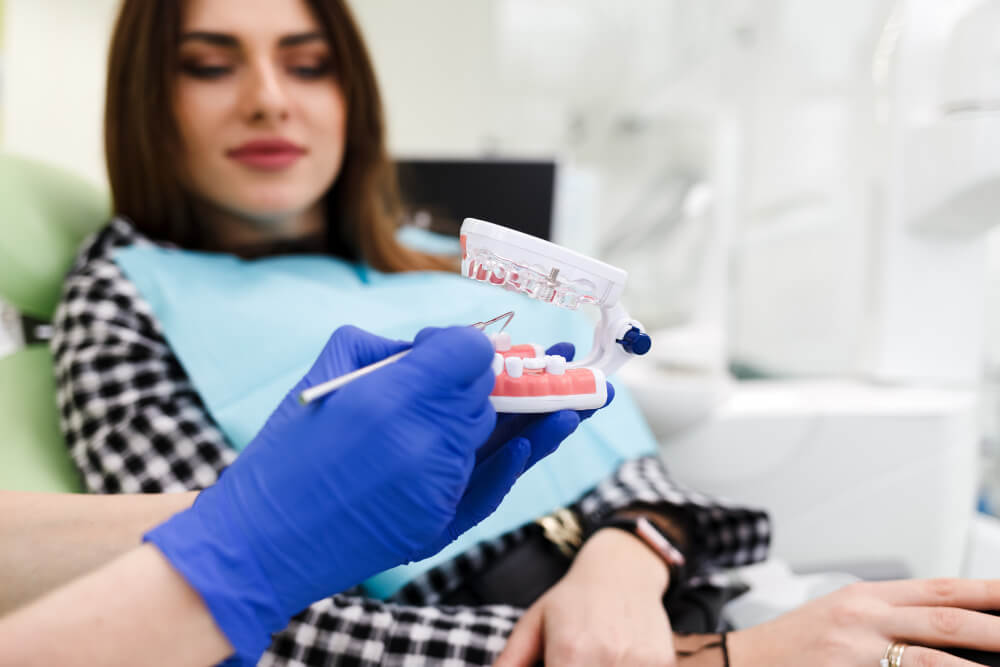Dental Crown Procedure, Step-by-Step Recovery and Aftercare Guide

If you’ve been told you need a dental crown, you might be wondering what to expect—both during and after the procedure. Your tooth may be weakened, damaged or discoloured, but a dental crown can restore its strength, shape and natural appearance.
Understanding each stage of the process makes you feel more comfortable and ensures a speedy recovery.
Here’s a simple, step-by-step guide to the dental crown procedure, along with what you can expect during recovery and how to care for your new crown in the long run.
Step 1: The Consultation and Assessment
It starts with a complete dental check-up. Your Gordon dentist will assess your tooth’s condition using X-rays and discuss the best restorative options.
A dental crown may be suggested as a measure to prevent further destruction of your tooth in case of its cracking, decay, or root canal treatment. This stage is also your opportunity to ask questions—about materials, colour matching, and what to expect.
Most crowns are made from porcelain, ceramic, or a blend of materials that mimic the natural look of your teeth. Your dentist will help you choose the right type based on your needs and lifestyle.
Step 2: Tooth Preparation
Once you’re ready to proceed, the tooth will be prepared. This step involves reshaping the damaged tooth so the dental crown can fit snugly over it. You’ll receive a local anaesthetic to keep you comfortable throughout the process.
In some cases, if too much of your natural tooth structure is missing, your dentist may first build up the area with a filling material. This provides the crown with a steady base on which to sit.
Step 3: Taking Impressions
After shaping your tooth, your dentist will take digital or mould impressions to create a precise model of your mouth. Those impressions are transmitted to a dental laboratory, where your individual crown is designed to precisely fit in shape and colour to those of the surrounding teeth.
While waiting for your permanent crown, you’ll usually be fitted with a temporary one. This protects your prepared tooth, allowing you to eat and smile normally in the meantime.
Step 4: Placing the Permanent Crown
Once your permanent dental crown is ready—typically within a couple of weeks—you’ll return for your final appointment. Your dentist will fit the temporary crown off and will examine the fit, bite and colour of your new one.
In case of constant pain, swelling, or if the crown seems not to be smooth, this is a sign to call your Gordon dentist and adjust. When you see your reflection after this step, you’ll likely be amazed at how natural your smile looks again.
Recovery After a Dental Crown
Most people experience very little downtime after getting a dental crown. However, mild sensitivity or tenderness around the treated area is normal, especially if the tooth nerve was irritated during preparation.
Here’s what you can expect during recovery:
- First 24 hours: You may feel slight pressure or soreness, which usually eases quickly. Over-the-counter pain relief can help if needed.
- First few days: Avoid sticky or hard foods until your bite feels completely normal.
- Within a week, any minor discomfort should fade as your mouth adjusts to the new crown.
When you experience consistent pain, swelling or the crown is not even, call your dentist in Gordon and have a look at them to get them corrected.
Aftercare Tips for a Long-Lasting Dental Crown
Your dental crown can last for many years—often 10 to 15 or more—if you care for it properly. While the crown itself cannot decay, the tooth underneath still can, so maintaining good oral hygiene is key.
Here are some practical aftercare tips:
1. Maintain a Strong Oral Hygiene Routine
Always brush your teeth twice a day with fluoride toothpaste and remember to floss behind the crown. This helps prevent plaque build-up where the crown meets your gum line.
2. Be Mindful of What You Eat
Although crowns are durable, they aren’t indestructible. Do not open packages with your teeth and do not chew ice. When you grind your teeth at night, you should discuss with your dentist the use of a night guard to protect your crown and natural teeth.
3. Schedule Regular Dental Check-Ups

Visiting the dentist regularly is necessary to check on the condition of your crown and the gums around it. Your Gordon dentist will check that everything remains secure and clean, and they can polish the crown to maintain its natural shine.
4. Watch for Warning Signs
If your crown ever feels loose, cracks, or falls out, contact your dentist immediately. Prompt attention prevents further complications and ensures your smile stays protected.
Why a Dental Crown Is Worth It
Beyond restoring function, a dental crown brings back confidence in your smile. You’ll be able to eat comfortably, speak naturally, and smile without worrying about a damaged or discoloured tooth showing.
In a community like Gordon, where daily interactions—at work, with family, or out in the community—often involve sharing a smile, restoring that confidence can make a genuine difference in how you feel about yourself.
Dental Crowns in Gordon
Dental crown procedure is a straightforward, transformative treatment that can strengthen your tooth and enhance your smile. With the right aftercare and regular check-ups, your crown will serve you well for many years to come.
If you’re in Gordon and think you might benefit from a dental crown, now’s the perfect time to take that next step. Speak to your dentist today to restore your smile’s health, function, and natural beauty—one confident grin at a time.
Call us at (02) 9498 8290 or schedule a consultation with your trusted dentist in Gordon at Northern Dental Gordon.
We are located at Suite 3, 2 St Johns Ave in Gordon and proudly serve the local communities in Chatswood, Roseville, Lindfield, Killara, Pymble, St Ives, Turramurra, Wahroonga, and Berowra.
